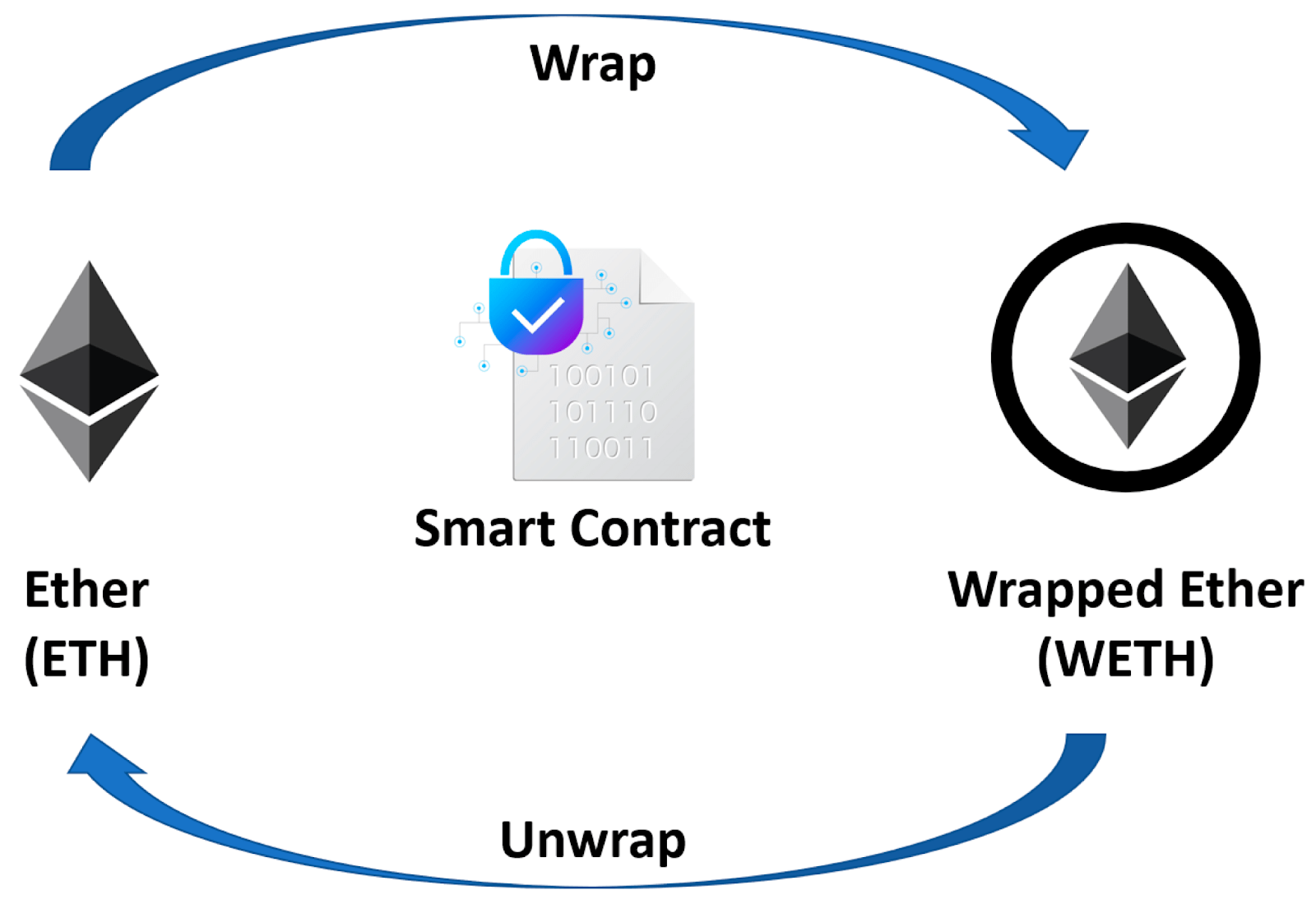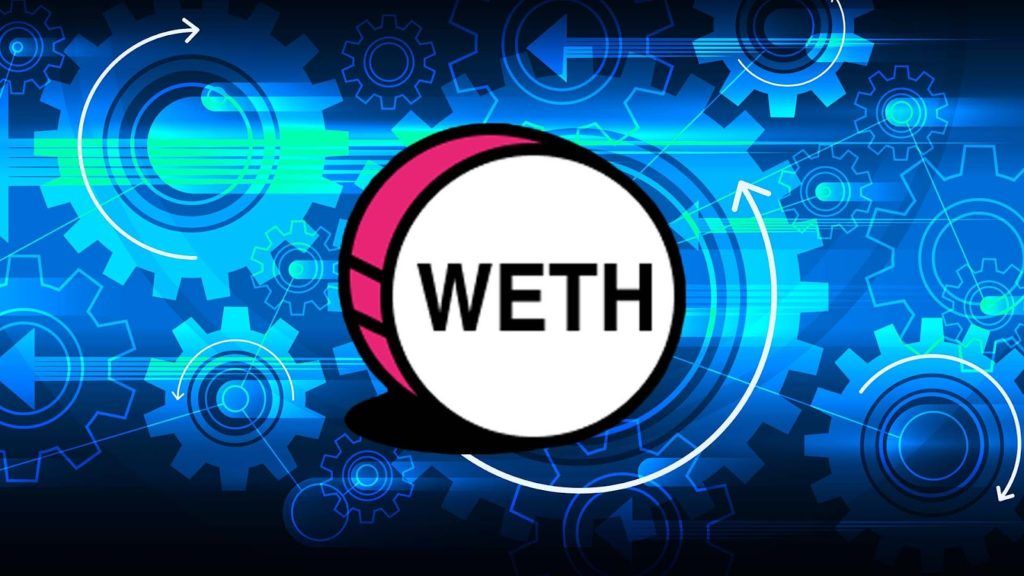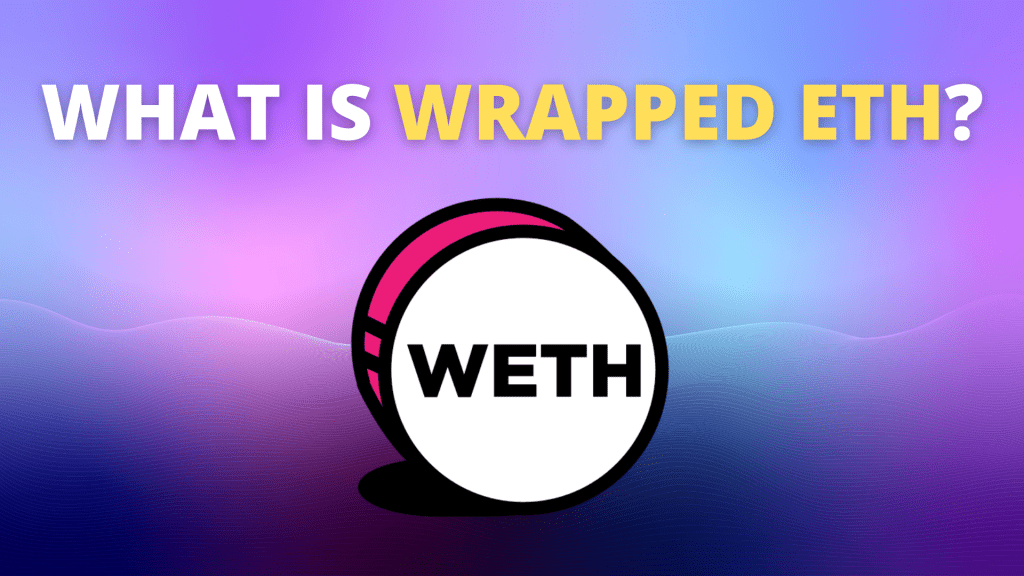In the expanding realm of cryptocurrency and decentralized finance (DeFi), Ethereum (ETH) stands as one of the most fundamental and influential assets. Despite its prominence, ETH has certain limitations when it comes to interacting with various decentralized applications (dApps) and protocols. This is where Wrapped Ethereum (wETH) comes into play. Wrapped ETH represents a crucial advancement, facilitating the seamless integration of Ethereum into the broader ERC-20 token ecosystem. This article explores what is Wrapped ETH, why it matters, how it functions, and its various applications within the world of DeFi.
Definition of wrapped Ethereum (wETH)
Wrapped Ethereum (wETH) is an ERC-20 token that represents Ethereum (ETH) on the Ethereum blockchain. To understand wETH, it’s important to grasp the concept of “wrapping” in the context of blockchain technology. Wrapping involves converting a digital asset into a token that adheres to a different standard or format to enhance compatibility and interoperability.
Ethereum, the native cryptocurrency of the Ethereum network, predates the ERC-20 token standard. While ETH is fundamental to the Ethereum ecosystem, it does not comply with the ERC-20 standard, which defines a common set of rules for tokens on the Ethereum network. This lack of compliance can create challenges when integrating ETH with certain DeFi platforms or other tokens that follow the ERC-20 standard.
Wrapped ETH resolves this issue by creating an ERC-20 compliant version of ETH. When ETH is wrapped, it is deposited into a smart contract, which then issues an equivalent amount of wETH to the user. This process ensures that wETH can be used in the same manner as any other ERC-20 token, allowing for greater interoperability across the Ethereum ecosystem. 
Read more: WHAT IS ETHEREUM? COMPREHENSIVE GUIDE TO DECENTRALIZED REVOLUTION
Why should users wrap ETH?
There are several compelling reasons why users might choose to wrap their ETH into wETH:
Compatibility with DeFi Protocols
Many decentralized finance (DeFi) platforms operate using ERC-20 tokens. By converting ETH to wETH, users can participate in a wide range of DeFi activities, such as lending, borrowing, and yield farming, that require ERC-20 tokens.
Enhanced Liquidity
Wrapped ETH increases liquidity on decentralized exchanges (DEXs). Since wETH adheres to the ERC-20 standard, it can be easily traded against other ERC-20 tokens, facilitating smoother transactions and better liquidity across trading pairs.
Unified Token Standards
Wrapping ETH helps maintain consistency in token standards. By converting ETH to wETH, users ensure that their assets comply with the same standards as other tokens they might use, simplifying interactions with smart contracts and other protocols.
Smart Contract Compatibility
Many smart contracts are designed to interact with ERC-20 tokens. Using wETH ensures that users can engage with these contracts without facing compatibility issues, making it easier to leverage various blockchain-based services.
How do users wrap and unwrap ETH?
Wrapping and unwrapping ETH is a straightforward process that involves interacting with smart contracts. Here’s a step-by-step guide on how users can convert ETH to wETH and vice versa:
Wrapping ETH:
- Choose a Platform: Users can wrap ETH using various platforms or services that offer wrapping functionality. Examples include decentralized exchanges like Uniswap or dedicated wrapping services.
- Deposit ETH: The user deposits ETH into a smart contract designed for wrapping. This smart contract holds the ETH and issues an equivalent amount of wETH to the user’s wallet.
- Receive wETH: Once the deposit is made, the user receives wETH in their wallet. This wETH can now be used within the ERC-20 token ecosystem for various transactions and interactions.
Unwrapping ETH:
- Select the Unwrapping Service: To convert wETH back to ETH, users need to use a service that supports unwrapping. This is often the same platform used for wrapping.
- Deposit wETH: The user deposits their wETH into a smart contract that handles the unwrapping process.
- Receive ETH: The smart contract burns the wETH and releases an equivalent amount of ETH to the user’s wallet. The user can now use this ETH in its native form.
The process of wrapping and unwrapping ETH is designed to be seamless, ensuring that users can easily manage their assets as needed.

How does wETH work?
The operation of wETH revolves around smart contracts that facilitate the wrapping and unwrapping processes. Here’s a closer look at how wETH functions:
Smart Contracts
The wrapping and unwrapping of ETH are managed by smart contracts on the Ethereum blockchain. When a user wraps ETH, the smart contract locks up the ETH and issues an equivalent amount of wETH to the user. Conversely, when unwrapping, the smart contract burns the wETH and releases the corresponding amount of ETH.
ERC-20 Compliance
wETH is an ERC-20 token, meaning it follows the rules and standards set for ERC-20 tokens. This compliance ensures that wETH can interact seamlessly with other ERC-20 tokens and protocols, facilitating a wide range of transactions and integrations within the Ethereum ecosystem.
Value Parity
The value of wETH is always pegged to the value of ETH on a 1:1 basis. This parity is maintained through the wrapping and unwrapping process, ensuring that 1 wETH is always equivalent to 1 ETH. This consistency is crucial for maintaining trust and reliability within the DeFi space.
Security and Transparency
The wrapping process is transparent and secure, as it relies on smart contracts that are publicly accessible and verifiable. Users can audit these contracts to ensure the integrity of their assets during the wrapping and unwrapping process.
What is wETH used for?
Wrapped ETH plays a significant role in various aspects of the Ethereum ecosystem. Here’s a breakdown of its primary uses:
DeFi Applications
Many DeFi platforms require ERC-20 tokens for transactions, staking, or liquidity provision. wETH is frequently used in these platforms, enabling users to participate in activities such as lending, borrowing, and yield farming. For example, users can deposit wETH into liquidity pools on platforms like Uniswap or Compound to earn rewards and interest.
Decentralized Exchanges (DEXs)
On decentralized exchanges, wETH is often used as a trading pair with other ERC-20 tokens. This facilitates a wide range of trading options and provides liquidity to the exchange. By using wETH, traders can swap between ETH and other tokens with ease.
Liquidity Pools
Automated market makers (AMMs) and liquidity pools often use wETH as a trading pair with other ERC-20 tokens. By adding wETH to these pools, users can earn fees and rewards based on their liquidity provision, enhancing the overall liquidity of the exchange.
Smart Contract Interaction
Various smart contracts on the Ethereum network are designed to work with ERC-20 tokens. Using wETH ensures that these contracts can function as intended, allowing users to engage with a broad range of decentralized services, including token swaps and decentralized insurance.
Cross-Platform Integration
Wrapped ETH facilitates the integration of ETH with platforms or services that only support ERC-20 tokens. This ensures that ETH holders can interact with a broader range of applications and services within the Ethereum ecosystem, enhancing their ability to utilize their assets effectively.

Conclusion
Wrapped Ethereum (wETH) represents a crucial innovation in the Ethereum ecosystem, enabling ETH to seamlessly interact with a wide range of decentralized applications, DeFi platforms, and smart contracts. By converting ETH into wETH, users gain access to a broader array of financial tools and services, facilitating participation in the growing world of decentralized finance.
The process of wrapping and unwrapping ETH is designed to be user-friendly and efficient, allowing for easy management of assets. With its ERC-20 compliance and consistent value parity, wETH ensures interoperability and liquidity within the Ethereum ecosystem.
As the landscape of DeFi and blockchain technology continues to evolve, the role of wETH in facilitating these advancements will likely become even more significant. For anyone involved in the Ethereum ecosystem or looking to maximize their use of Ethereum-based applications, understanding and utilizing wETH is an essential step in navigating this dynamic and rapidly developing space.

